Chapter 2. DIVERSITY II—PLANTS
Learning Objectives
General Purpose
Conceptual
- Be able to compare and contrast the major groups within the kingdom Plantae.
- Be able to describe the major evolutionary trends in the kingdom Plantae.
- Be able to differentiate between the sporophyte and gametophyte generations.
Background Information
Plants are eukaryotic, multicellular, autotrophic organisms that use photosynthesis to convert light energy to chemical energy. Most forms are terrestrial. Land plants generally have complex, multicellular plant bodies that are specialized for a variety of functions. Specialized structures have evolved for protection of the vulnerable stages of sexual reproduction. The plant body is often covered with a waxy cuticle that prevents desiccation.
While plants present a large array of diversity, there are a couple of themes that run throughout this kingdom (Table 10-1). These themes include changes in size, changes in dependence on water, changes in vascular tissue, and changes in the dominance of the stages of the life cycle.
Table 10-1. Classification of land plants.
Plant Life Cycle
Land plants have a common sexual reproductive life cycle called alternation of generations, in which plants alternate between a haploid gametophyte generation and a diploid sporophyte generation (Figure 10-1).

These two generations differ in their morphology. In all land plants except the bryophytes (mosses) and and hepatophytes (liverworts), the diploid sporophyte generation is the dominant (more conspicuous) generation. The sporophyte of the vascular plants can be tall and have large leaves although in many vascular plants the sporophyte is low growing. The sporophyte generation undergoes meiosis to produce haploid spores. The spores germinate to produce the haploid gametophyte, which is independent of the sporophyte in nonvascular and seedless vascular plants, but dependent on the sporophyte in the seed plants. The gametophyte produces haploid gametes by mitosis. Fertilization (fusion of the gametes) results in a diploid zygote, which is the first stage of the diploid sporophyte generation.
Note that both gametes and spores are haploid in this life cycle. The difference between these two cells is that gametes fuse with other gametes to form the zygote and restore the diploid number, while spores germinate to form a new haploid gametophyte plant.
For more about the general characteristics of plants and the alternation of generations life cycle view the following video:
Nonvascular Plants
Division Chlorophyta
The Chlorophyta are green algae including unicellular motile and non-motile, colonial, filamentous, and multicellular species that inhabit primarily freshwater environments (Figure 10-2).
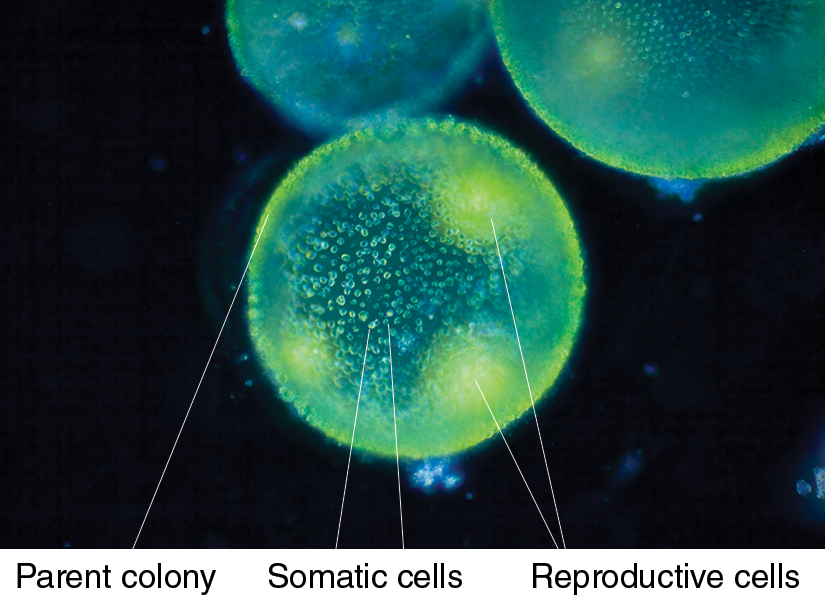
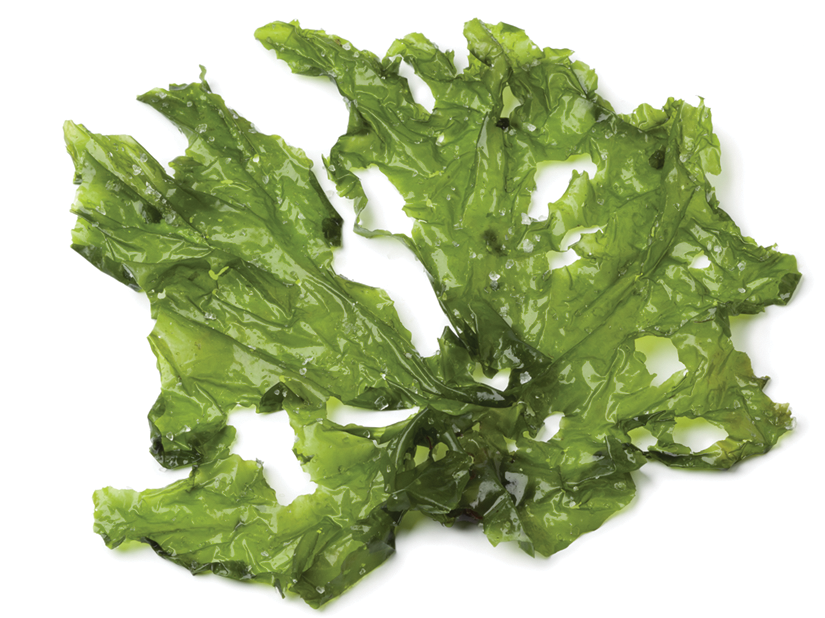
Members of Phylum Chlorophyta can have an alternation of generations life cycle that exhibits isomorphic sporophyte and gametophyte phases that are very similar in their external appearance (Figure 10-3).
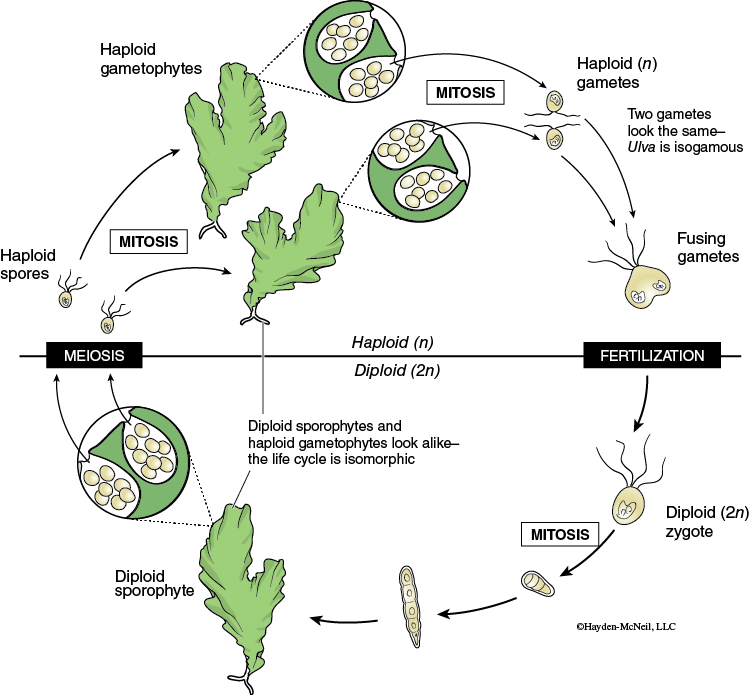
Division Bryophyta
The plant life cycle is evident in bryophytes, true mosses. This familiar plant forms a green fuzzy ground cover which is composed of the gametophyte stage. This is nonvascular and haploid. Mosses grow a vascularized sporophyte that extends out of the low-growing gametophyte that is responsible for producing and dispersing spores (Figure 10-4).

To see an example of spore dispersal of a bryophyte species view the video below:
Division Hepatophyta
Liverworts are so named because their bodies are flattened and lobed (Figure 10-5).
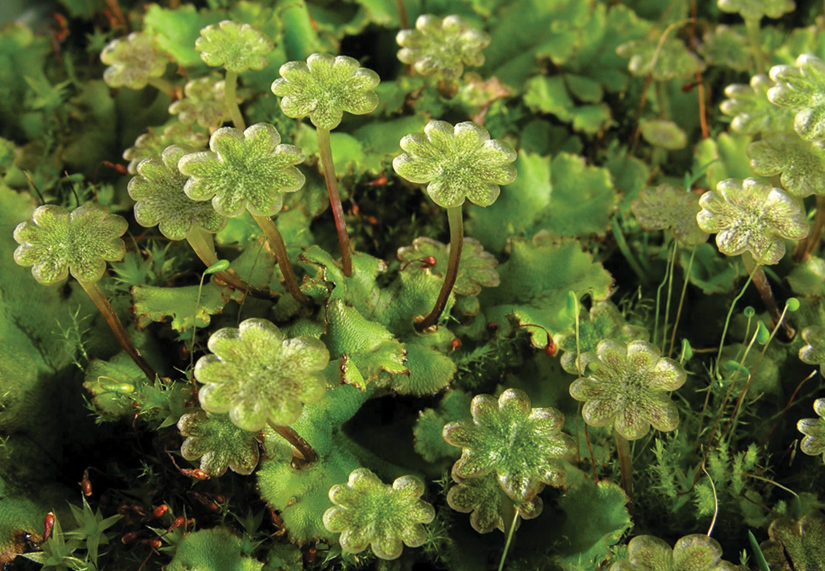
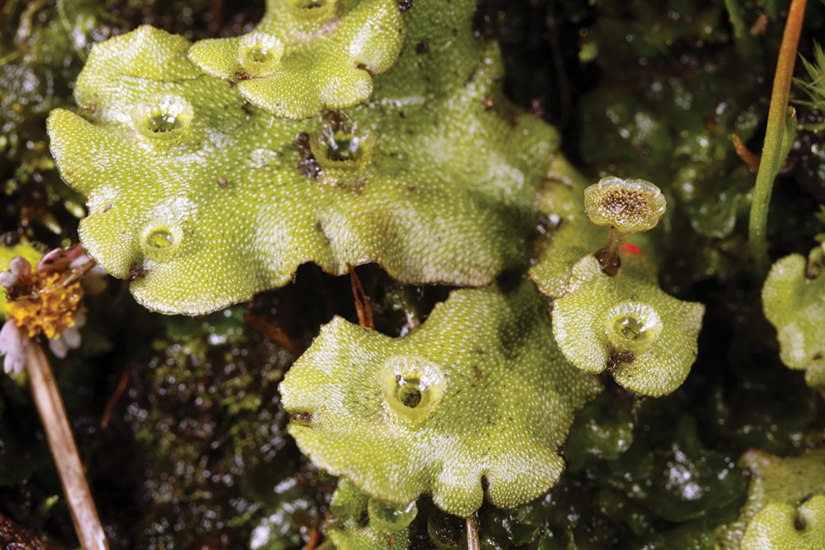
Early herbalists believed that these plants were beneficial in the treatment of liver disorders. Although less common than mosses, liverworts can be found along streams on moist rocks, but because of their small size they are often overlooked.
Seedless Vascular Plants
Division Lycophyta
Members of Lycophyta are usually found in moist habitats, including bogs and stream sides (Figure 10-6).
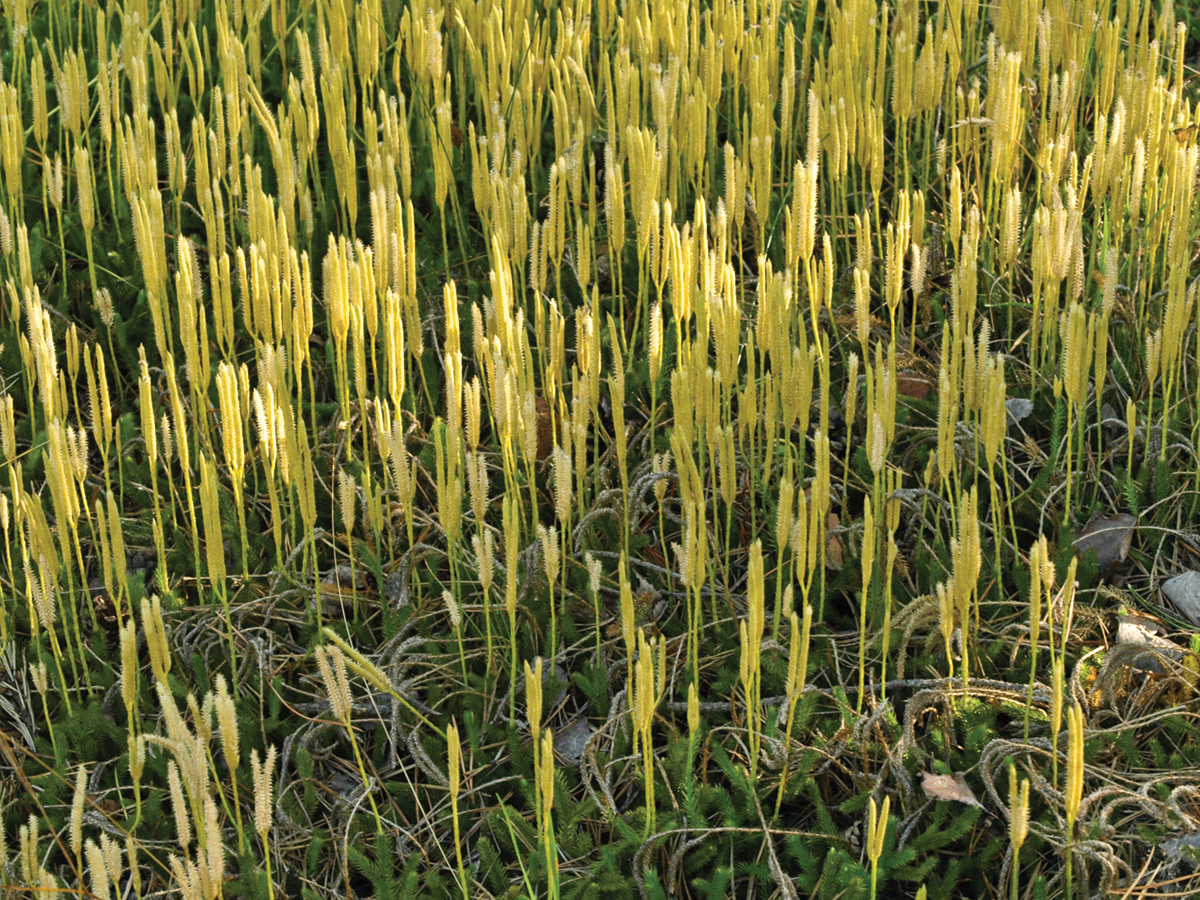
While members of this division are not common today, during the Carboniferous period they formed the forest canopy; they were the ecological equivalent of today’s oaks, hickories, and pines.
Division Sphenophyta
Members of Sphenophyta contain silica in their cell walls that produces a rough texture to the stem (Figure 10-7).
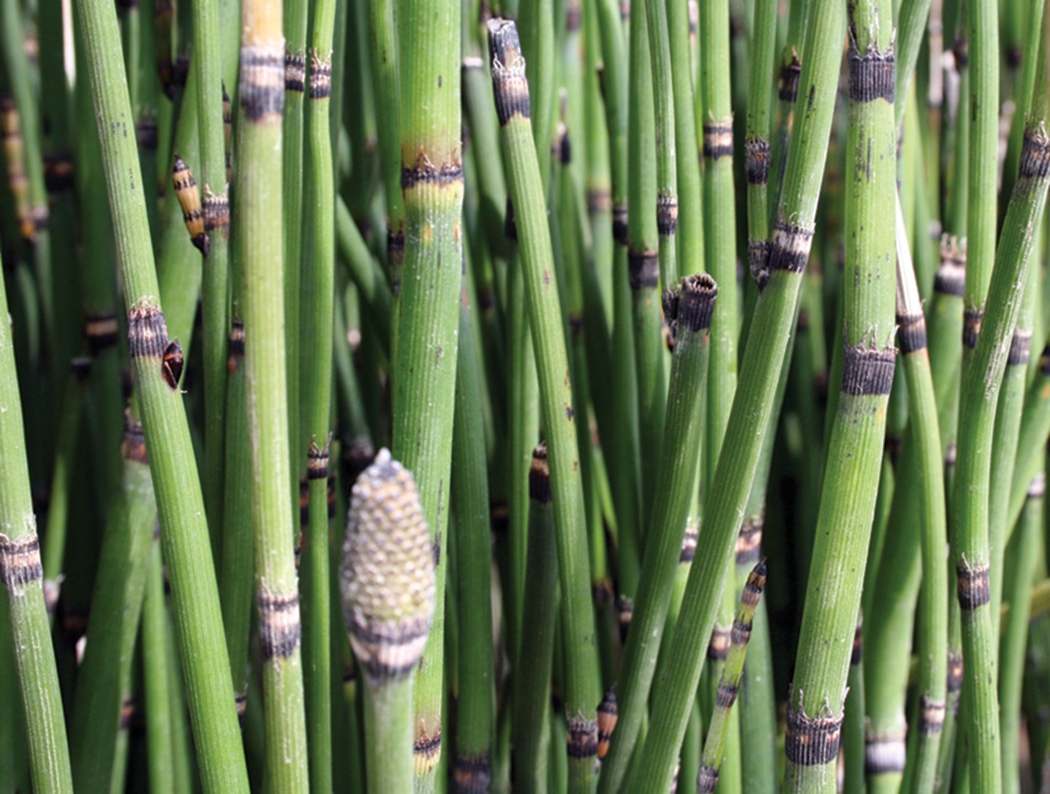
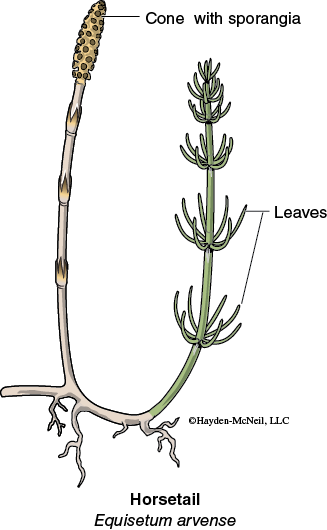
These plants were used by pioneers to scrub dishes, thus their name, scouring rushes. Horsetails grow as weeds along roadsides, generally occurring in moist habitats.
Division Pterophyta
This division is the last division to have a free-living gametophyte. The sori on the back of reproducing fern leaves release spores which then form small free-living haploid gametophytes (Figure 10-8).
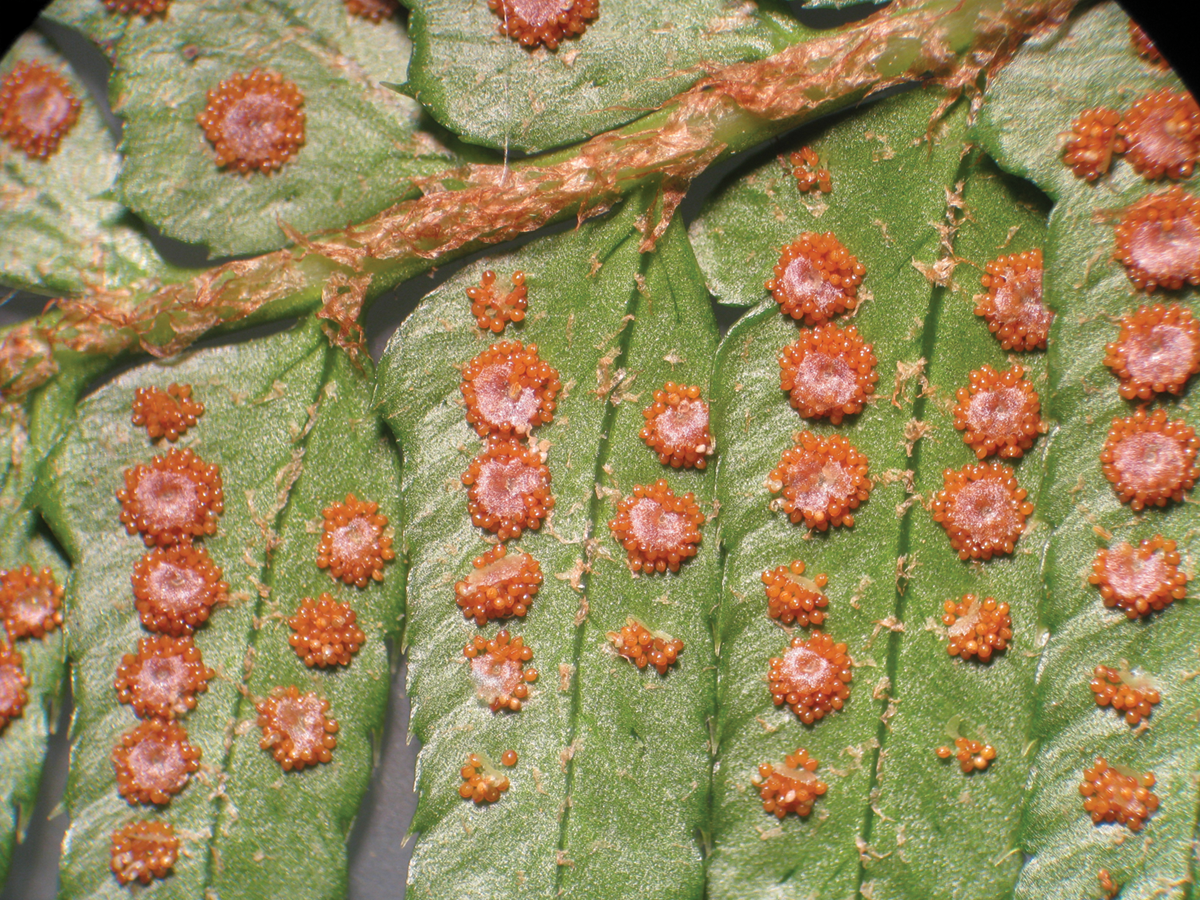
The gametophytes require water for the egg and sperm they release to fertilize and form another sexually reproduced sporophyte (fern plant).
Seed Plants
Gymnosperms (Seed Plants with Naked Seeds)
Gymnosperms include separate divisions of plants. Many of the organisms in this group are familiar plants including sago “palms” (cycadophyta) known commonly as cycads (Figure 10-9) and pine trees (coniferophyta) known commonly as conifers (Figure 10-10).
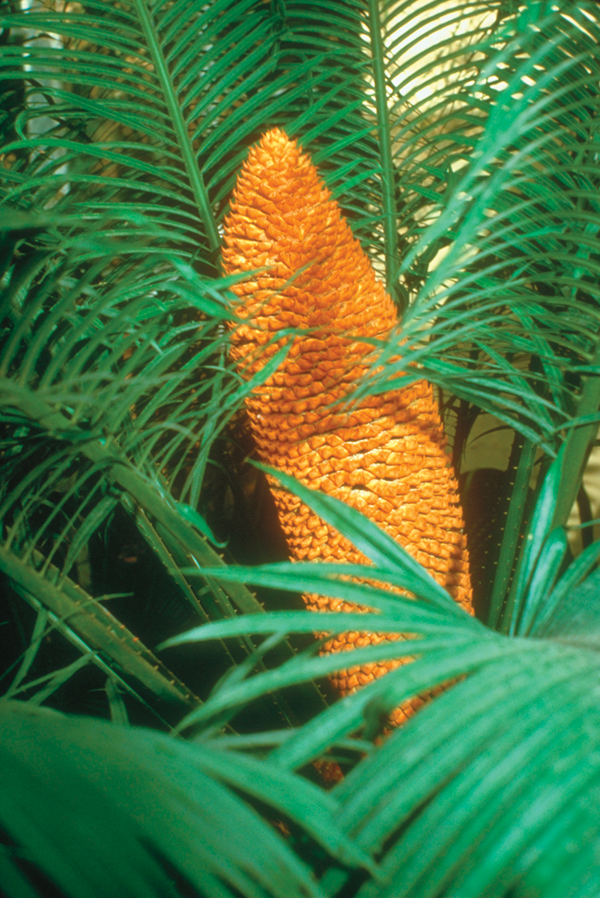
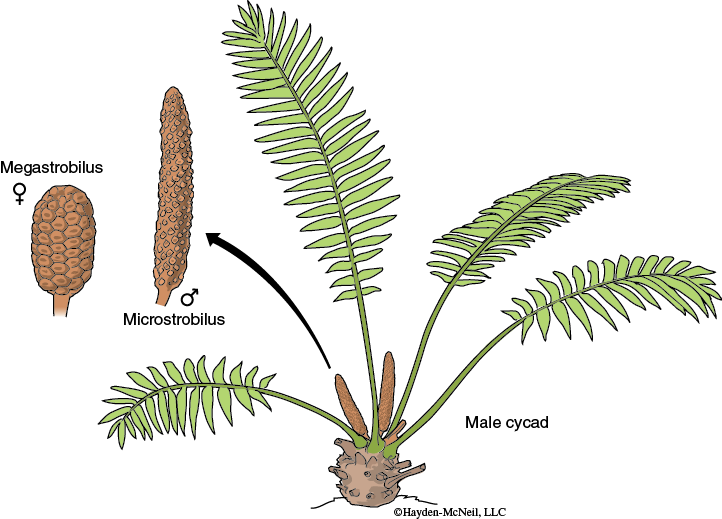
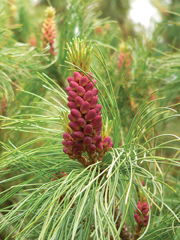
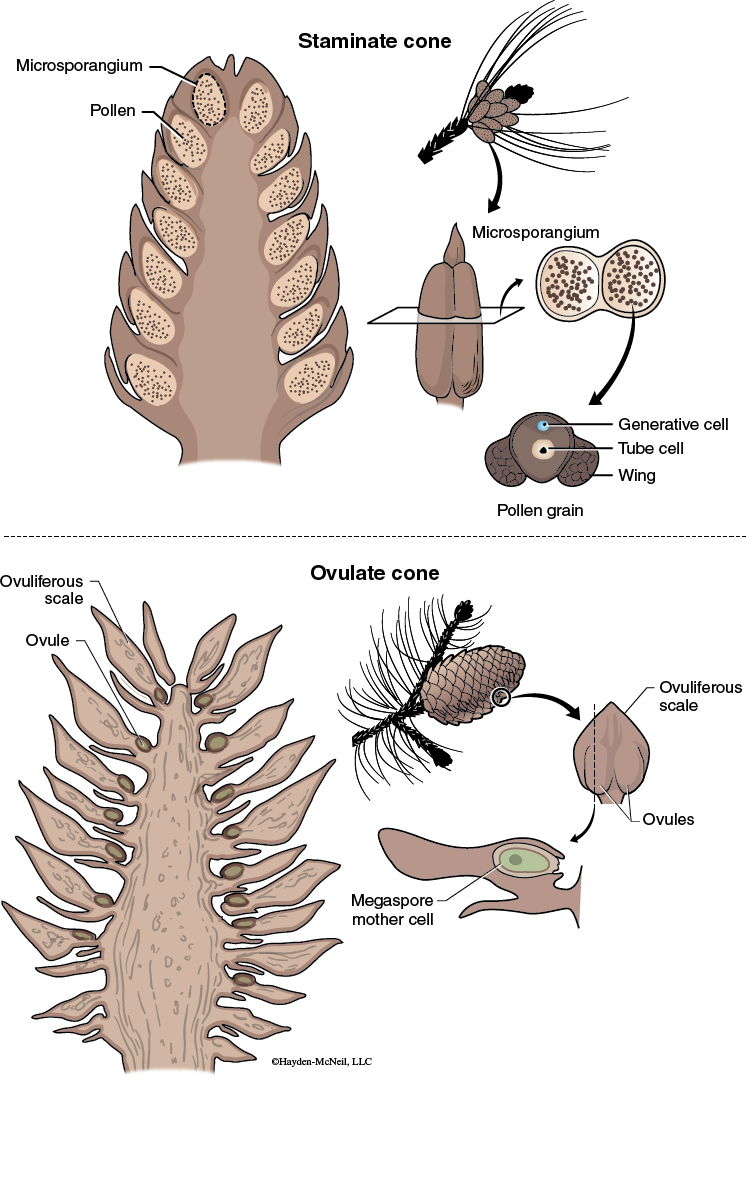
Members of this division are no longer dependent upon water for reproduction; these plants can live and reproduce in a variety of environments. The copious pollen is the immature male gametophyte that is released from the male reproductive structures. The pollen is then carried by the wind and can land on the female reproductive structure containing female gametophytes. From these gametophytes the gametes (male = sperm and female = egg) can fuse and form a new sporophyte that can grow and develop.
Angiosperms (Seed Plants with Covered Seeds)
Angiosperms have a single but very diverse division known as Anthophyta. Flowering plants with their diverse means of reproduction, both animal and wind, have become so successful that they are the largest group of plants (Figure 10-11).
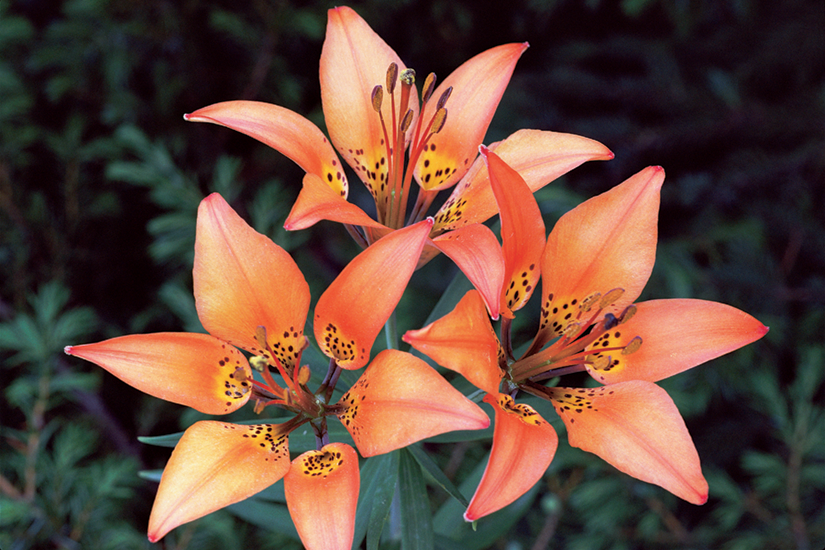
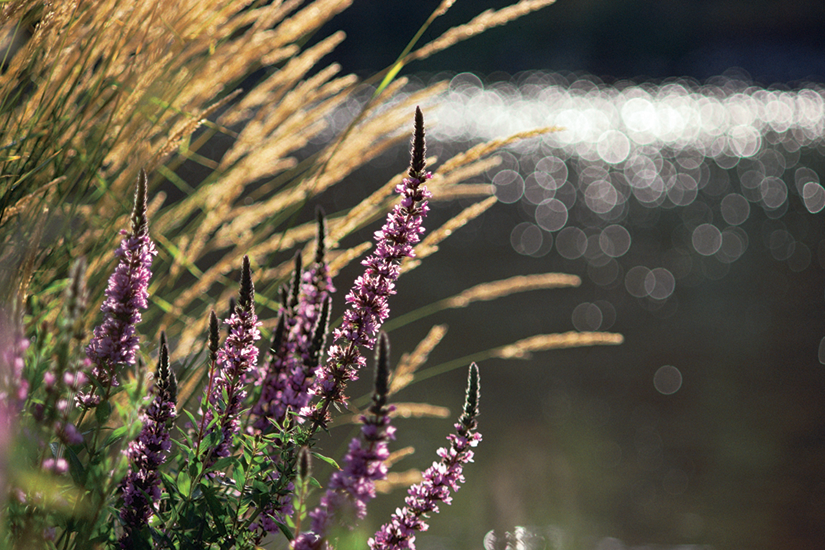

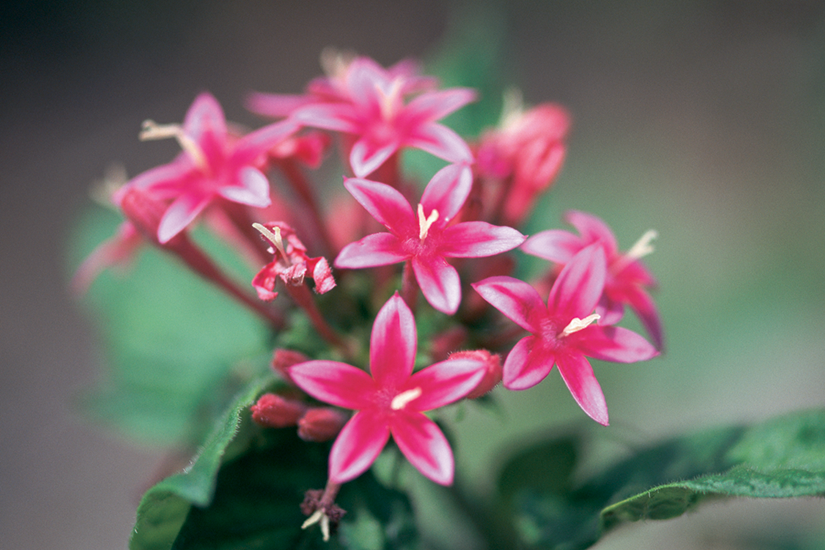

Like the Gymnosperms the members of Anthophyta have very dominant vascular sporophyte stages. Their seeds are referred to as covered because they are contained after fertilization in modified tissue from the female gametophyte (Figure 10-12).
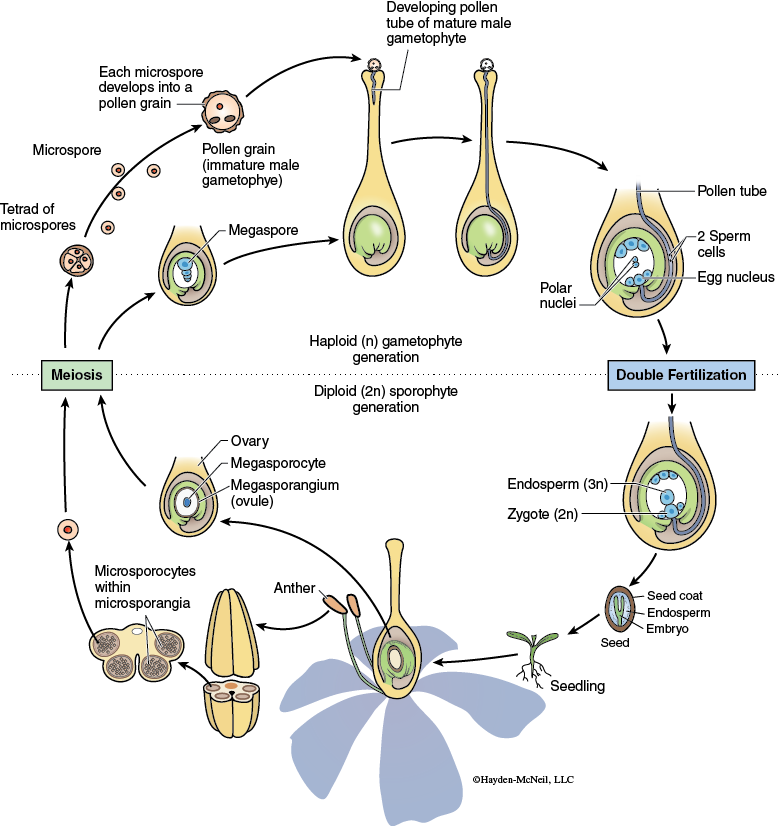
Pre-Lab Quiz
Proceed to the Pre-Lab Quiz